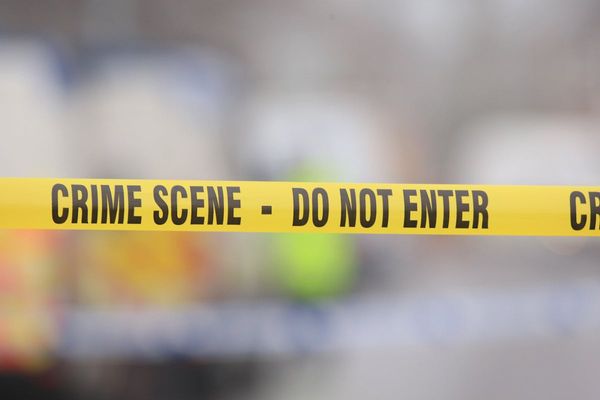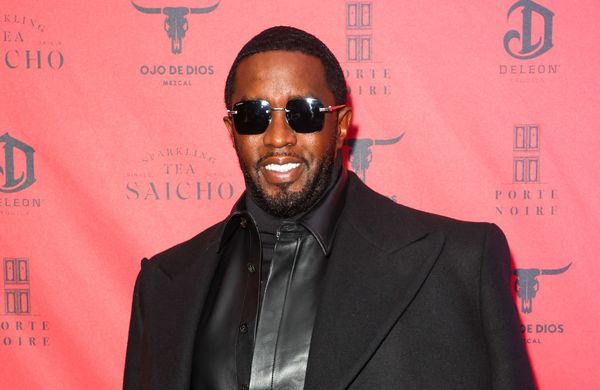
The mission statement of Canberra’s National Portrait Gallery is all there in the title: to represent to the nation the faces of Australians historical and contemporary via the generic language of the portrait, mostly in painting, but also occasionally in sculpture and photography.
While the gallery has made tentative forays into exhibitions that stretch the notion of the portrait into related areas – reportage and commercial photography, new media and video art – it has largely stuck to conventional definitions. But its latest show breaks with tradition.
In the Flesh explores the concept of humanness, that often contradictory mess of emotions, intellect and philosophies that binds our species together but can also make us strangers to one another. The exhibition features the work of 10 Australian artists spread through a series of colour-coded rooms, each arranged according to a series of loose definitions of the possible meanings of the art therein.
Intimacy comes first, featuring work by Sam Jinks, and is an intense red. Jinks makes hyper-realistic sculptures that play with scale and contrast – almost the first piece you see in the show is Small Things (2012), in which a life-sized newborn baby, complete with human hair, nestles next to five tree frogs.
Second is empathy, a blue room with a video installation and a sculpture by Patricia Piccinini. Next up is vulnerability with three major pieces by Ron Mueck, then transition, transience, alienation, restlessness, mortality, reflection and, finally, acceptance.

The idea of curating a show by interpretive theme isn’t new; it’s the mainstay of contemporary art exhibitions. What marks out In the Flesh is a unifying and intensely humanist idea, one that harks back to the mid-20th century and shows such as The Family of Man, and further still, to the pre-modern era, when art had an educative moralist intention.
So too this show, which sets to recast familiar examples of Australian art while offering the viewer a moral framework in which to consider them. Piccinini’s video The Gathering (2007) – in which a child asleep on a carpeted floor is menaced by some cute furballs that later reveal themselves to contain disturbing monsters – is set alongside the sculpture The Long Awaited (2008), a boy asleep with what appears to be a human-dugong hybrid.
Ron Mueck is well known for the startling realism of his sculptures and, like Jinks, alters context and scale for dramatic effect. The nearly 3m high Wild Man (2005) and the 2.5m Pregnant Woman (2002) stand near the tiny sculpture Untitled [Old Woman in Bed] (2000-02). The intense detail of the work inevitably casts the viewer as a voyeur, allowing us to come closer to these apparently real people than we could ever come in real life to a total stranger.
Walking through the show it struck me how all the works were examples of contemporary realism, that hyper-detailed and almost surreally intense deployment of special effects whose main purpose is to eliminate the expressionist edge in art – that thing we recognise as emotion – and replace it with a cooler commentary on its subject.

Jan Nelson’s Walking Through Tall Grass (2001-ongoing) is a series of paintings of teenagers and young adults in varied poses, dressed in recognisably adolescent regalia and hung on a candy-striped wall. They’re extraordinary pictures but not exactly a warm experience. Jinks gets more space with his sculpture sequences Still Life (Pieta) (2007) and Divide (2011), which alternate between religious allegory and scientific observation.
Photorealist paintings by Juan Ford were, for me, the most affecting. Ford’s The Reorientalist (2013) is a masked, paint-spattered figure holding a bunch of sticks wrapped to look like a gun: the playing of war games reflects the reality of war in a disturbing way, so familiar yet alien.
The exhibition pushes the limits of interpretation, with some works seeming tangential to their theme, others too literal. But this is the sign of a good show – testing the limits of ideas and our reactions to art. For the National Portrait Gallery it’s also a welcome diversion into what I hope will be a new direction.
• In the Flesh is at the National Portrait Gallery, Canberra, until 9 March







